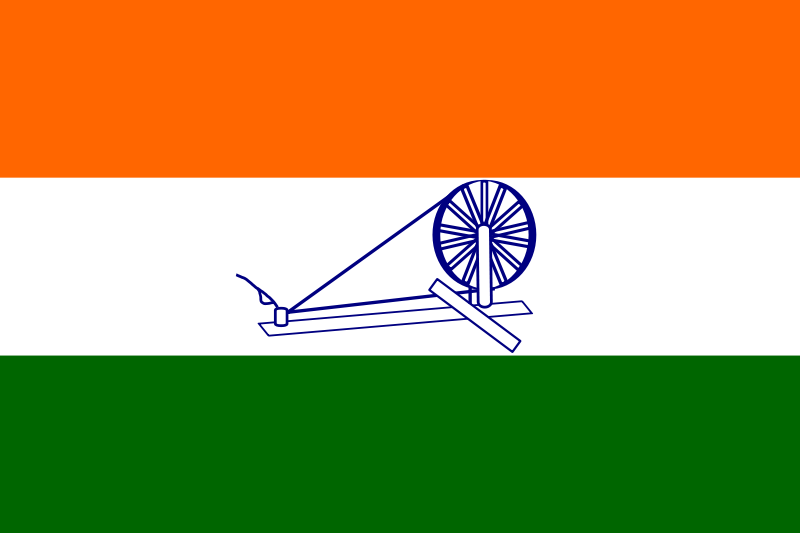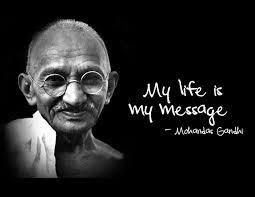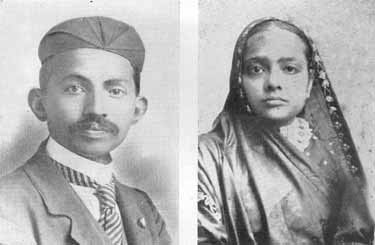Gandhi’s Message for Today’s World
EDITORIAL, 18 Feb 2019
#574 | John Scales Avery – TRANSCEND Media Service
2019 is the 150th anniversary of Mahatma Gandhi’s birth. Therefore it might be appropriate to look at his life, and his message for today’s world.
If humans are ever to achieve a stable global society in the future, they will have to become much more modest in their economic behavior and much more peaceful in their politics. For both modesty and peace, Gandhi is a useful source of ideas. The problems with which he struggled during his lifetime are extremely relevant to us in the 21st Century, when both nuclear and ecological catastrophes threaten the world.
Avoiding Escalation of Conflicts
Today we read almost every day of killings that are part of escalating cycles of revenge and counter-revenge, for example in the Middle East. Gandhi’s experiences both in South Africa and in India convinced him that such cycles could only be ended by unilateral acts of kindness and understanding from one of the parties in a conflict. He said, “An eye for an eye makes the whole world blind”.
Gandhi Studies Law in England
Mohandas Karamchand Gandhi was born in 1869 in Porbandar, India. His family belonged to the Hindu caste of shopkeepers. (In Gujarati “Gandhi” means “grocer”.) However, the family had risen in status, and Gandhi’s father, grandfather, and uncle had all served as dewans (i.e. prime ministers) of small principalities in western India.
In 1888, Gandhi sailed for England, where he spent three years studying law at the Inner Temple in London. Before he left India, his mother had made him take a solemn oath not to touch women, wine, or meat. He thus came into contact with the English vegetarians, who included Sir Edward Arnold (translator of the Bhagavad Gita), the Theosophists Madame Blavatsky and Annie Besant, and the Fabians. Contact with this idealistic group of social critics and experimenters helped to cure Gandhi of his painful shyness, and it also developed his taste for social reform and experimentation.
South Africa
Gandhi’s exceptionally sweet and honest character won him many friends in England, and he encountered no racial prejudice at all. However, when he traveled to Pretoria in South Africa a few years later, he experienced racism in its worst form. Although he was meticulously well dressed in an English frock coat, and in possession of a first-class ticket, Gandhi was given the choice between traveling third class or being thrown off the train. (He chose the second alternative.) Later in the journey he was beaten by a coach driver because he insisted on his right to sit as a passenger rather than taking a humiliating position on the footboard of the coach.
The legal case which had brought Gandhi to South Africa was a dispute between a wealthy Indian merchant, Dada Abdullah Seth, and his relative, Seth Tyeb (who had refused to pay a debt of 40,000 pounds, in those days a huge sum). Gandhi succeeded in reconciling these two relatives, and he persuaded them to settle their differences out of court. Later he wrote about this experience:
“Both were happy with this result, and both rose in public estimation. My joy was boundless. I had learnt the true practice of law. I had learnt to find out the better side of human nature and to enter men’s hearts. I realized that the true function of a lawyer was to unite parties riven asunder. The lesson was so indelibly burnt into me that a large part of my time during my twenty years of practice as a lawyer was occupied in bringing about compromises of hundreds of cases. I lost nothing thereby – not even money, certainly not my soul.”
Gandhi was about to return to India after the settlement of the case, but at a farewell party given by Abdullah Seth, he learned of a bill before the legislature which would deprive Indians in South Africa of their right to vote. He decided to stay and fight against the bill.
Gandhi spent the next twenty years in South Africa, becoming the leader of a struggle for the civil rights of the Indian community. In this struggle he tried “…to find the better side of human nature and to enter men’s hearts.”
Gandhi’s stay in England had given him a glimpse of English liberalism and English faith in just laws. He felt confident that if the general public in England could be made aware of gross injustices in any part of the British Empire, reform would follow. He therefore organized non
violent protests in which the protesters sacrificed themselves so as to show as vividly as possible the injustice of an existing law. For example, when the government ruled that Hindu, Muslim and Parsi marriages had no legal standing, Gandhi and his followers voluntarily went to prison for ignoring the ruling.
Gandhi used two words to describe this form of protest: “satyagraha” (the force of truth) and “ahimsa” (nonviolence). Of these he later wrote: “I have nothing new to teach the world. Truth and nonviolence are as old as the hills. All that I have done is to try experiments in both on as vast a scale as I could. In so doing, I sometimes erred and learnt by my errors. Life and its problems have thus become to me so many experiments in the practice of truth and nonviolence.”
In his autobiography, Gandhi says: “Three moderns have left a deep impression on my life and captivated me: Raychandbhai (the Indian philosopher and poet) by his living contact; Tolstoy by his book ‘The Kingdom of God is Within You’; and Ruskin by his book ‘Unto This Last’.”
Ruskin’s book, “Unto This Last”, which Gandhi read in 1904, is a criticism of modern industrial society. Ruskin believed that friendships and warm interpersonal relationships are a form of wealth that economists have failed to consider. He felt that warm human contacts are most easily achieved in small agricultural communities, and that therefore the modern tendency towards centralization and industrialization may be a step backward in terms of human happiness. While still in South Africa, Gandhi founded two religious Utopian communities based on the ideas of Tolstoy and Ruskin. Phoenix Farm (1904) and Tolstoy Farm (1910). At this time he also took an oath of chastity (“brahmacharya”), partly because his wife was unwell and he wished to protect her from further pregnancies, and partly in order to devote himself more completely to the struggle for civil rights.

Gandhi’s spinning wheel was incorporated into the flag of the Congress Party, and later into the flag of independent India.
The Struggle for Indian Independence
Because of his growing fame as the leader of the Indian civil rights movement in South Africa, Gandhi was persuaded to return to India in 1914 and to take up the cause of Indian home rule. In order to reacquaint himself with conditions in India, he traveled tirelessly, now always going third class as a matter of principle.
During the next few years, Gandhi worked to reshape the Congress Party into an organization which represented not only India’s Anglicized upper middle class but also the millions of uneducated villagers who were suffering under an almost intolerable burden of poverty and disease. In order to identify himself with the poorest of India’s people, Gandhi began to wear only a white loincloth made of rough homespun cotton. He traveled to the remotest villages, recruiting new members for the Congress Party, preaching nonviolence and “firmness in the truth”, and becoming known for his voluntary poverty and humility. The villagers who flocked to see him began to call him “Mahatma” (Great Soul).
Disturbed by the spectacle of unemployment and poverty in the villages, Gandhi urged the people of India to stop buying imported goods, especially cloth, and to make their own. He advocated the reintroduction of the spinning wheel into village life, and he often spent some hours spinning himself. The spinning wheel became a symbol of the Indian independence movement, and was later incorporated into the Indian flag.
The movement for boycotting British goods was called the “Swadeshi movement”. The word Swadeshi derives from two Sanskrit roots: Swa, meaning self, and Desh, meaning country. Gandhi described Swadeshi as “a call to the consumer to be aware of the violence he is causing by supporting those industries that result in poverty, harm to the workers and to humans or other creatures.”
Gandhi tried to reconstruct the crafts and self-reliance of village life that he felt had been destroyed by the colonial system. “I would say that if the village perishes India will perish too”, he wrote,
“India will be no more India. Her own mission in the world will get lost. The revival of the village is only possible when it is no more exploited. Industrialization on a mass scale will necessarily lead to passive or active exploitation of the villagers as problems of competition and marketing come in. Therefore we have to concentrate on the village being self-contained, manufacturing mainly for use. Provided this character of the village industry is maintained, there would be no objection to villagers using even the modern machines that they can make and can afford to use. Only they should not be used as a means of exploitation by others.”
“You cannot build nonviolence on a factory civilization, but it can be built on self-contained villages… Rural economy as I have conceived it, eschews exploitation altogether, and exploitation is the essence of violence… We have to make a choice between India of the villages that are as ancient as herself and India of the cities which are a creation of foreign domination…”
“Machinery has its place; it has come to stay. But it must not be allowed to displace necessary human labour. An improved plow is a good thing. But if by some chances, one man could plow up, by some mechanical invention of his, the whole of the land of India, and control all the agricultural produce, and if the millions had no other occupation, they would starve, and being idle, they would become dunces, as many have already become. There is hourly danger of many being reduced to that unenviable state.”
In these passages we see Gandhi not merely as a pioneer of nonviolence; we see him also as an economist. Faced with misery and unemployment produced by machines, Gandhi tells us that social goals must take precedence over blind market mechanisms. If machines are causing unemployment, we can, if we wish, use labor-intensive methods instead. With Gandhi, the free market is not sacred – we can do as we wish, and maximize human happiness, rather than maximizing production and profits.
Gandhi also organized many demonstrations whose purpose was to show the British public that although the British raj gave India many benefits, the toll exacted was too high, not only in terms of money, but also in terms of India’s self-respect and self-sufficiency. All of Gandhi’s demonstrations were designed to underline this fact. For example, in 1930 Gandhi organized a civil-disobedience campaign against the salt laws. The salt laws gave the Imperial government a monopoly and prevented Indians from making their own salt by evaporating sea water. The majority of Indians were poor farmers who worked long hours in extreme heat and salt was as much a necessity to them as bread. The tax on salt was essentially a tax on the sweat of the farmers.
Before launching his campaign, Gandhi sent a polite letter to the Viceroy, Lord Irwin, explaining his reasons for believing that the salt laws were unjust, and announcing his intention of disregarding them unless they were repealed.
Then, on March 12 1930, Gandhi and many of his followers, accompanied by several press correspondents, started on a march to the sea to carry out their intention of turning themselves into criminals by making salt. Every day, Gandhi led the procession about 12 miles, stopping at villages in the evenings to hold prayer meetings. Many of the villagers joined the march, while others cast flower petals in Gandhi’s path or sprinkled water on his path to settle the dust.
On April 5 the marchers arrived at the sea, where they spent the night in prayer on the beach. In the morning they began to make salt by wading into the sea, filling pans with water, and letting it evaporate in the sun. Not much salt was made in this way, but Gandhi’s action had a strong symbolic power.
A wave of nonviolent civil disobedience demonstrations swept over India, so extensive and widespread that the Imperial government, in danger of losing control of the country, decided to arrest as many of the demonstrators as possible. By midsummer, Gandhi and a hundred thousand of his followers were in prison, but nevertheless the civil disobedience demonstrations continued.
In January, 1931, Gandhi was released from prison and invited to the Viceroy’s palace to talk with Lord Irwin. They reached a compromise agreement: Gandhi was to call off the demonstrations and would attend a Round Table Conference in London to discuss Indian home rule, while Lord Irwin agreed to release the prisoners and would change the salt laws so that Indians living near to the coast could make their own salt.
The salt march was typical of Gandhi’s nonviolent methods. Throughout the demonstrations he tried to maintain a friendly attitude towards his opponents, avoiding escalation of the conflict. Thus at the end of the demonstrations, the atmosphere was one in which a fair compromise solution could be reached. Whenever he was in prison, Gandhi regarded his jailers as his hosts. Once, when he was imprisoned in South Africa, he used the time to make a pair of sandals, which he sent to General Smuts, the leader of the South African government. Thus Gandhi put into practice the Christian principle, “Love your enemies; do good to them that hate you.”
Mahatma Gandhi’s Message for Us Today
Gandhi believed that human nature is essentially good, and that it is our task to find and encourage whatever is good in the character of others.
During the period when he practiced as a lawyer, Gandhi’s aim was “to unite parties riven asunder,” and this was also his aim as a politician. In order for reconciliation to be possible in politics, it is necessary to avoid escalation of conflicts. Therefore Gandhi used nonviolent methods, relying only on the force of truth. “It is my firm conviction,” he wrote, “that nothing can be built on violence.”
To the insidious argument that “the end justifies the means,” Gandhi answered firmly: “They say ‘means are after all means’. I would say ‘means are after all everything’. As the means, so the end. Indeed the Creator has given us control (and that very limited) over means, none over end. … The means may be likened to a seed, and the end to a tree; and there is the same inviolable connection between the means and the end as there is between the seed and the tree. Means and end are convertible terms in my philosophy of life.” In other words, a dirty method produces a dirty result; killing produces more killing; hate leads to more hate. But there are positive feedback loops as well as negative ones. A kind act produces a kind response; a generous gesture is returned; hospitality results in reflected hospitality. Hindus and Buddhists call this principle “the law of karma”.
Gandhi believed that the use of violent means must inevitably contaminate the end achieved. Because Gandhi’s methods were based on love, understanding, forgiveness and reconciliation, the nonviolent revolution which he led left very little enmity in its wake. When India finally achieved its independence from England, the two countries parted company without excessive bitterness. India retained many of the good ideas which the English had brought – for example the tradition of parliamentary democracy – and the two countries continued to have close cultural and economic ties.
Gandhi’s insight can be applied to the argument that the nuclear bombings that destroyed Hiroshima and Nagasaki helped to end World War II and were therefore justified. In fact, these terrible events lead to a nuclear arms race that still casts an extremely dark shadow over the future of human civilization. Here, as in every other case, the end did not justify the means. The end achieved was contaminated by the means used to achieve it.
Today, as in Gandhi’s lifetime, we need a revolution. We need to end the institution of war. We need to restore democracy in our own countries when it has been replaced by oligarchy. We need to act promptly to prevent
catastrophic climate change, thermonuclear war and a large-scale global famine. But this revolution must be a nonviolent one, like Ghandi’s revolutions in South Africa and India.
We Must Stop Using Material Possessions for Social Competition
Mahatma Gandhi was assassinated by a Hindu extremist on January 30, 1948. After his death, someone collected and photographed all his worldly goods. These consisted of a pair of glasses, a pocket watch, a pair of sandals and a white homespun loincloth. That was all. Here, as in the Swadeshi movement, we see Gandhi as a pioneer of economics. He deliberately reduced his possessions to an absolute minimum in order to demonstrate that there is no connection between personal merit and material goods. Mahatma Gandhi told us that we must stop using material goods as a means of social competition. We must start to judge people not by what they have, but by what they are.
__________________________________________
 John Scales Avery, Ph.D., who was part of a group that shared the 1995 Nobel Peace Prize for their work in organizing the Pugwash Conferences on Science and World Affairs, is a member of the TRANSCEND Network and Associate Professor Emeritus at the H.C. Ørsted Institute, University of Copenhagen, Denmark. He is chairman of both the Danish National Pugwash Group and the Danish Peace Academy and received his training in theoretical physics and theoretical chemistry at M.I.T., the University of Chicago and the University of London. He is the author of numerous books and articles both on scientific topics and on broader social questions. His most recent books are Information Theory and Evolution and Civilization’s Crisis in the 21st Century (pdf).
John Scales Avery, Ph.D., who was part of a group that shared the 1995 Nobel Peace Prize for their work in organizing the Pugwash Conferences on Science and World Affairs, is a member of the TRANSCEND Network and Associate Professor Emeritus at the H.C. Ørsted Institute, University of Copenhagen, Denmark. He is chairman of both the Danish National Pugwash Group and the Danish Peace Academy and received his training in theoretical physics and theoretical chemistry at M.I.T., the University of Chicago and the University of London. He is the author of numerous books and articles both on scientific topics and on broader social questions. His most recent books are Information Theory and Evolution and Civilization’s Crisis in the 21st Century (pdf).
This article originally appeared on Transcend Media Service (TMS) on 18 Feb 2019.
Anticopyright: Editorials and articles originated on TMS may be freely reprinted, disseminated, translated and used as background material, provided an acknowledgement and link to the source, TMS: Gandhi’s Message for Today’s World, is included. Thank you.
If you enjoyed this article, please donate to TMS to join the growing list of TMS Supporters.

This work is licensed under a CC BY-NC 4.0 License.

